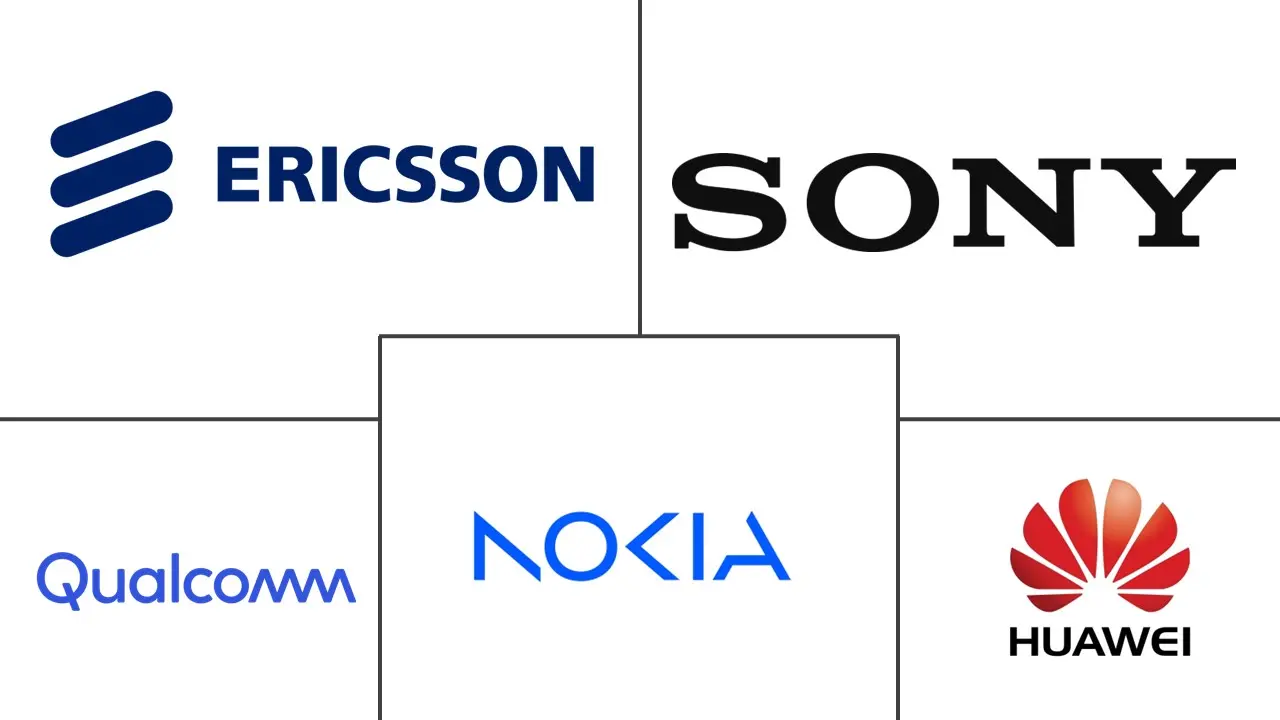MulteFire Market Size and Share
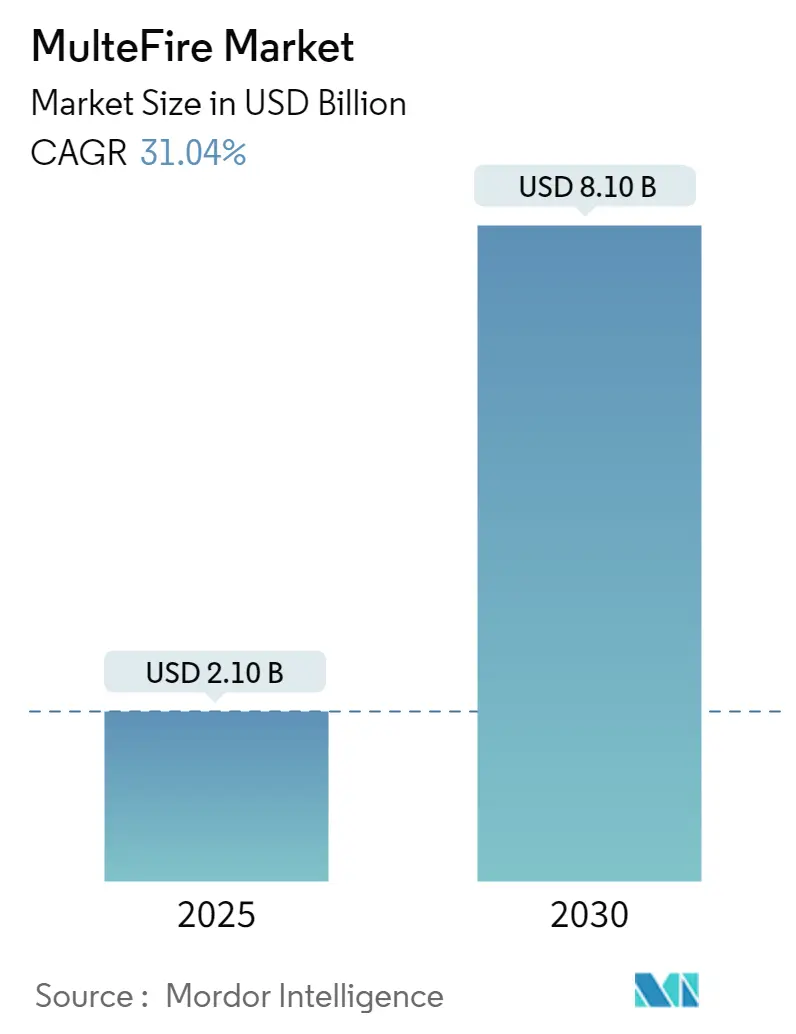
MulteFire Market Analysis by Mordor Intelligence
The MulteFire Market size is estimated at USD 2.10 billion in 2025, and is expected to reach USD 8.10 billion by 2030, at a CAGR of 31.04% during the forecast period (2025-2030).
The network's capacity has become limited as a result of the rising reliance on wireless connections to provide rich information to an ever-growing number of devices. Therefore, this encouraged the creation of MulteFire, which was intended to be a vital component of the solution to the growing mobile data traffic issue.
- MulteFire will be a critical enabler allowing enterprises to deploy LTE private networks without the involvement of a mobile network operator in unlicensed regional and global spectrum bands around the world, which includes the 2.4 GHz and 5 GHz global bands and the 800/900 MHz and 1.9 MHz regional bands.
- MulteFire, with its standalone feature, will open up an unlicensed spectrum to a host of new players, including wireless ISPs, global enterprises, specialist verticals, and even network operators, where all can deploy MulteFire-based LTE private networks.
- MulteFire enables the deployment of enhanced broadband services in more places with the combination of the enhanced performance of LTE with the deployment simplicity of the unlicensed spectrum. Since MulteFire is based on LTE, it will operate in wider bandwidths that support up to 20 MHz to support high capacity and low latency, capable of peak data rates up to 400 Mbps.
- The use of unlicensed spectrum by businesses or cable providers to create their own LTE networks may be made possible by MulteFire. When paired with LTE features like increased security, major organizations that lack licensed spectrum and desire greater mobility than Wi-Fi generally offers are expected to embrace MulteFire in industrial sectors like shipping ports, mines, and airports, among others. Additionally, MulteFire is predicted to be a connection choice for IoT deployments.
- The rise in the need for more scalable and advanced network connectivity for industrial IoT (IIoT) applications is one of the key factors anticipated to propel multefire market expansion over the projected period. Additionally, the increased need for high-performance and simple-to-deploy wireless connection networks is expected to fuel the multefire market's expansion.
- However, the increased need for high-capacity, cost-effective networks is predicted to limit the multefire market's expansion. On the other side, the growth of the multefire market in the timeframe period is further anticipated to be hampered by the delay in decisions relating to the utilization of shared spectrum.
- The COVID-19 has had a significant impact on the Multefire market. The rapid closure of various manufacturing firms and businesses significantly impacted the market. During the mid-first phase, the COVID-19 outbreak has caused changes in internet usage and download speeds monitored on servers based on internet quality to be seen in various places, increasing traffic volume. The most significant increases in traffic volume were observed practically everywhere immediately following announcements of official policies, such as school closings and instructions to stay at home.
Global MulteFire Market Trends and Insights
Growing Demand for Better and More Scalable Network Connectivity for Industrial Internet of Things (IIoT) Applications
- The use of unlicensed spectrum by businesses or cable providers to create their own LTE networks may be made possible by MulteFire. When paired with LTE features like increased security, major organizations that lack licensed spectrum and desire greater mobility than Wi-Fi generally offers are expected to embrace MulteFire in industrial sectors like shipping ports, mines, and airports, among others. Additionally, MulteFire is expected to be a connection choice for IoT deployments, thereby driving market growth.
- Moreover, the MulteFire Alliance considers private LTE networks for enterprise and industrial IoT to be critical use cases that will benefit from MulteFire technology. The alliance welcomed this collaboration with the Alliance of Industrial Internet (AII) to advance its goal of employing LTE and next-gen cellular technologies in unlicensed and shared spectrum. Such initiatives significantly drive growth in the market.
- Further, mobility and security are considered significant businesses that assess connectivity alternatives for their IoT deployments. Private LTE networks like MulteFire meet both requirements while solely employing unlicensed or shared spectrum. This is an ideal network option for sectors concerned about the size and extensiveness of their sensor-based IoT devices. MulteFire is essential in the IoT network architecture because it makes private LTE installations easier by providing spectrum sharing and coexistence.
- Furthermore, according to Ericsson's report, in 2022, the total IoT connections were reported to be valued at around 13.2 billion. These technologies enabled a significant increase in the number of connected devices in 2021, projected to reach about 500 million by the end of 2022. Increased network capabilities promote the development of Massive IoT technologies by enabling spectrum sharing between Massive IoT and 4G and 5G in FDD bands. Such rise in IoT connections would significantly comprise IIoT technologies, thereby driving the market growth.
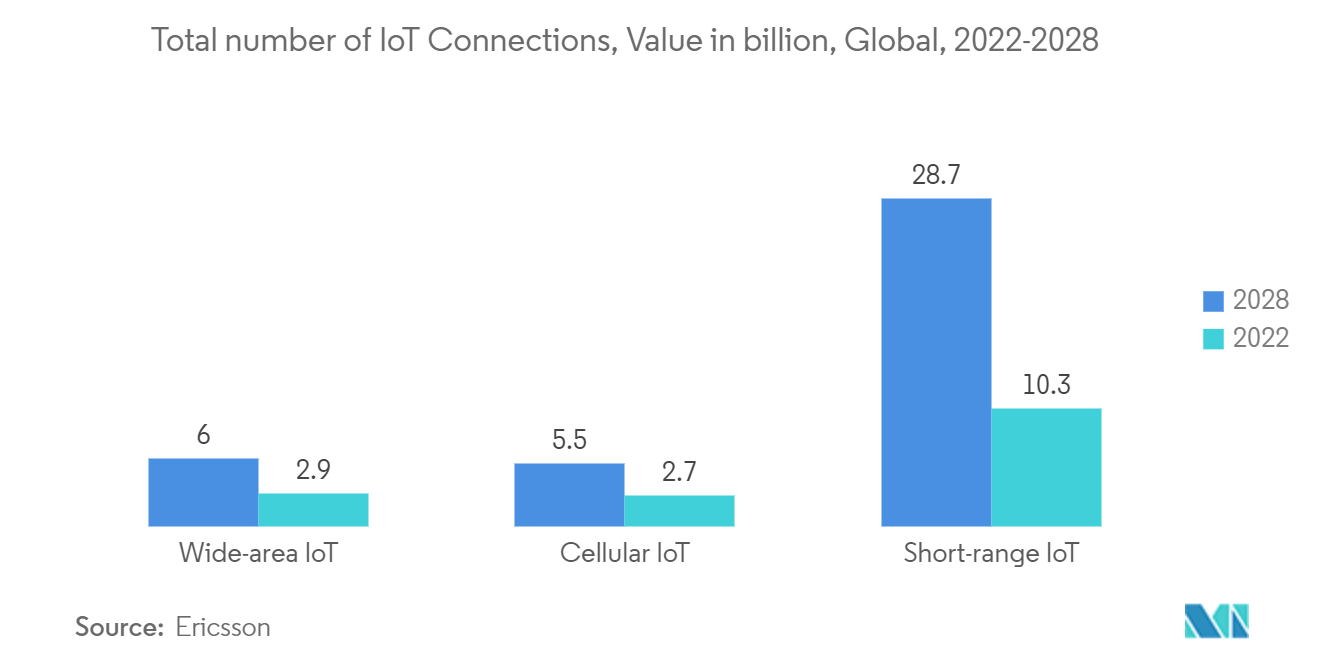
North America to Hold a Largest Market Share
- North America would be among the most significant regions for deploying MulteFire technology-based networks. The MulteFire Alliance's initiatives to investigate possibilities for making LTE technologies available in the unlicensed band for a variety of applications in several verticals, such as industrial manufacturing, mining, healthcare, and commercial, are likely to be a driving force behind the growth of the MulteFire market.
- Numerous significant businesses that are MulteFire Alliance members are based in the region, including Qualcomm, Intel, Wave Wireless, SpiderCloud Wireless, TMobile, and Verizon. Such prominent player presence in the region significantly contributes to the considerable market share, thereby enhancing the potential of the region in creating opportunities during the forecast period.
- The region is witnessing standardization in the operation of 5G NR in an unlicensed spectrum, and this has the potential to enable private networks to expand rapidly. This is called standalone NR-U and is analogous to standalone NR-U in MulteFire for LTE. The NR operating standalone in the unlicensed spectrum will become the MulteFire evolution path to 5G, and the United States witnessed a massive rollout of the 5G network.
- The market for MulteFire is anticipated to benefit from the rising usage of IoT devices, industry 4.0 solutions, and smart manufacturing solutions, which have increased the demand for a dependable and secure network for data transfers. For instance, in February 2023, L&T Technology Services Limited, an international engineering services firm, introduced a new suite of offerings focused on Industry 4.0 technologies for crucial verticals like transportation, medical devices, and high technological advancements, using the most recent advances in Artificial Intelligence (AI), robotics, 3D-vision systems, and connected machines. Such tehnology integrations would significantly drive the MulteFire technology in offering enhanced services, thereby increasing the region's market share.
- Futhermore, the region is also witnessing the deployment of Private IoT networks where enterprises can take advantage of the capabilities of LTE delivered over the unlicensed spectrum. Moreover, emerging Industrial IoT applications in the region to track goods and containers, provide safety and environmental information, and monitor transportation networks is also expected to boost the usage of MulteFire to develop next-generation operations.
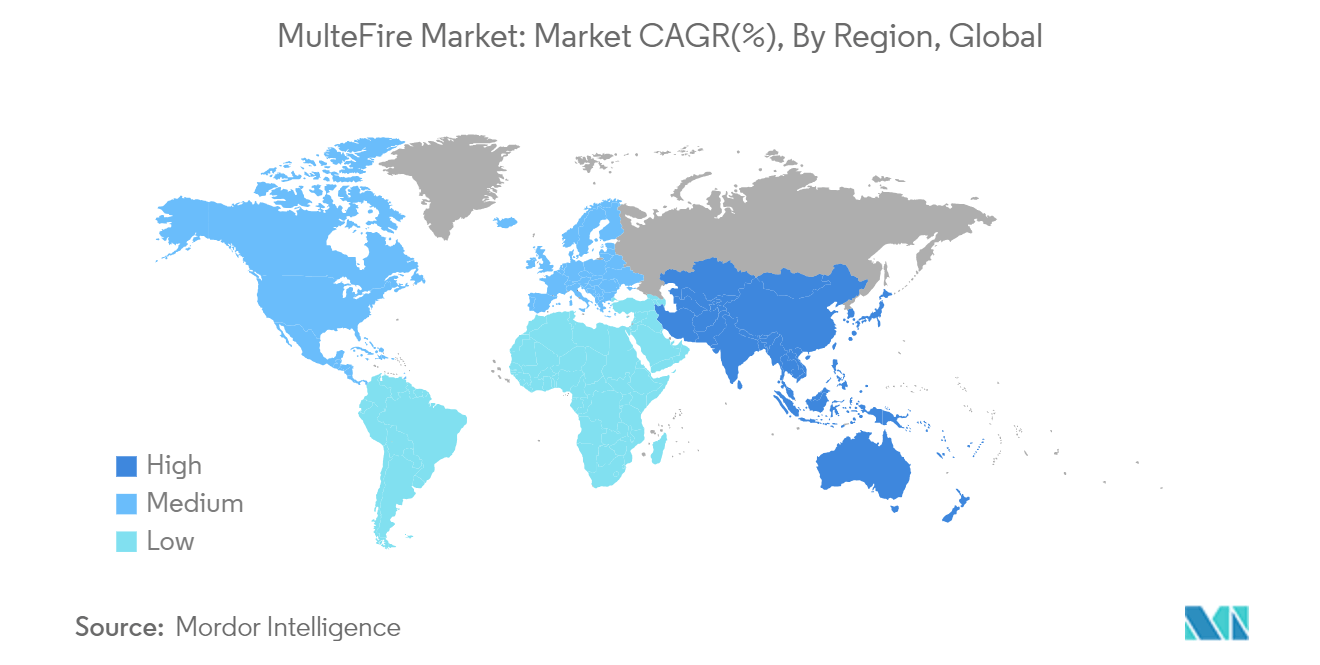
Competitive Landscape
The MulteFire market is relatively consolidated with a few prominent companies, such as Qualcomm, Nokia, and Huawei, which account for a significant market share. The companies significantly engage in innovations and partnerships to enhance their market shares. Moreover, all the companies in this market are a part of The MulteFire Alliance. A few of the prominent market players include Qualcomm Technologies, Inc., Nokia Corporation, Huawei Technologies Co., Ltd., Telefonaktiebolaget LM Ericsson, Sony Corporation, etc.
- February 2023 - the partnership between Nokia and Kyndryl, which automates factories utilizing 4G/5G private wireless networks and multi-access edge computing (MEC) technology, has been extended for another three years. The companies claimed that the lack of spectrum availability is rapidly declining due to governments distributing licensed spectrum for industrial usage and the introduction of unlicensed wireless networking solutions (such as CBRS in the US and MulteFire).
- January 2023 - Deutsche Telekom stated that the firm would deploy additional small cells to strengthen its 5G network. The carrier clarified that small cells enhance network quality in densely populated regions like markets, retail malls, and railway or bus stops. By 2025, Deutsche Telekom stated it would convert about 3,000 outdated public payphones into 5G small cells.
MulteFire Industry Leaders
-
Qualcomm Technologies, Inc.
-
Nokia Corporation
-
Huawei Technologies Co., Ltd.
-
Telefonaktiebolaget LM Ericsson
-
Sony Corporation
- *Disclaimer: Major Players sorted in no particular order
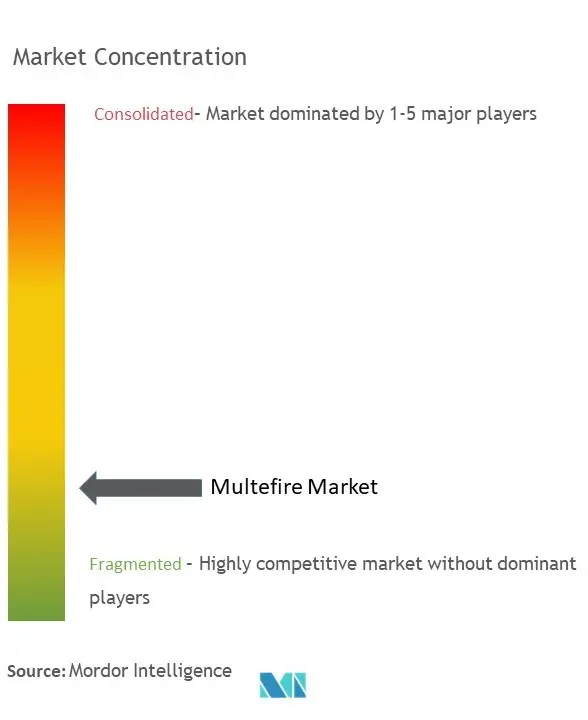
Recent Industry Developments
- February 2023 - Verana Networks, a mmWave small cells startup that The Mobile Network (TMN) profiled last year, has published parameters of a new trial with Verizon and made Verizon a strategic investor in the startup public for the initial time. Verana's mmWave small cells, installed to enable Integrated Access and Backhaul, will be put through field tests.
Global MulteFire Market Report Scope
MulteFire can be defined as an LTE-based system that runs independently in unlicensed and shared airwaves, including the global 5 GHz bands. MulteFire offers seamless mobility to support service continuity between small cells and other networks. Enterprises using MulteFire will be able to help critical voice and data applications such as high-speed mobile broadband for messaging, videos, and images. MulteFire technology is deployed in commercial and institutional buildings, supply chain and distribution, retail, hospitality, public venues, and healthcare sectors.
The multefire market is segmented by equipment type (small cells, switches, and controllers), end-user vertical (commercial and institutional buildings, supply chain and distribution, retail, hospitality, public venues, and healthcare), and geography (North America[United States, Canada], Europe [Germany, United Kingdom, France, Rest of Europe], Asia-pacific [India, China, Japan, Rest of Asia-Pacific], Latin America[Brazil, Argentina, Rest of Latin America], and Middle East and Africa[United Arab Emirates, Saudi Arabia, Rest of Middle East and Africa])..The market sizes and forecasts are provided in terms of value (USD) for all the above segments.
| Small Cells |
| Switches |
| Controllers |
| Commercial & Institutional Buildings |
| Supply Chain and Distribution |
| Retail |
| Hospitality |
| Public Venues |
| Healthcare |
| Others |
| North America | United States |
| Canada | |
| Europe | Germany |
| United Kingdom | |
| France | |
| Rest of Europe | |
| Asia-Pacific | India |
| China | |
| Japan | |
| Rest of Asia-Pacific | |
| Latin America | Brazil |
| Argentina | |
| Rest of Latin America | |
| Middle East & Africa | United Arab Emirates |
| Saudi Arabia | |
| Rest of Middle East & Africa |
| Equipment Type | Small Cells | |
| Switches | ||
| Controllers | ||
| End User Vertical | Commercial & Institutional Buildings | |
| Supply Chain and Distribution | ||
| Retail | ||
| Hospitality | ||
| Public Venues | ||
| Healthcare | ||
| Others | ||
| Geography | North America | United States |
| Canada | ||
| Europe | Germany | |
| United Kingdom | ||
| France | ||
| Rest of Europe | ||
| Asia-Pacific | India | |
| China | ||
| Japan | ||
| Rest of Asia-Pacific | ||
| Latin America | Brazil | |
| Argentina | ||
| Rest of Latin America | ||
| Middle East & Africa | United Arab Emirates | |
| Saudi Arabia | ||
| Rest of Middle East & Africa | ||
Key Questions Answered in the Report
How big is the MulteFire Market?
The MulteFire Market size is expected to reach USD 2.10 billion in 2025 and grow at a CAGR of 31.04% to reach USD 8.10 billion by 2030.
What is the current MulteFire Market size?
In 2025, the MulteFire Market size is expected to reach USD 2.10 billion.
Who are the key players in MulteFire Market?
Qualcomm Technologies, Inc., Nokia Corporation, Huawei Technologies Co., Ltd., Telefonaktiebolaget LM Ericsson and Sony Corporation are the major companies operating in the MulteFire Market.
Which is the fastest growing region in MulteFire Market?
Asia Pacific is estimated to grow at the highest CAGR over the forecast period (2025-2030).
Which region has the biggest share in MulteFire Market?
In 2025, the North America accounts for the largest market share in MulteFire Market.
What years does this MulteFire Market cover, and what was the market size in 2024?
In 2024, the MulteFire Market size was estimated at USD 1.45 billion. The report covers the MulteFire Market historical market size for years: 2019, 2020, 2021, 2022, 2023 and 2024. The report also forecasts the MulteFire Market size for years: 2025, 2026, 2027, 2028, 2029 and 2030.
Page last updated on:
MulteFire Market Report
Statistics for the 2025 MulteFire market share, size and revenue growth rate, created by Mordor Intelligence™ Industry Reports. MulteFire analysis includes a market forecast outlook for 2025 to 2030 and historical overview. Get a sample of this industry analysis as a free report PDF download.
